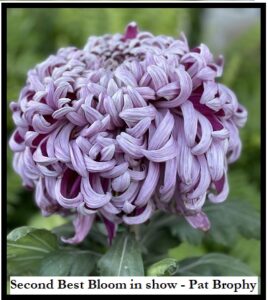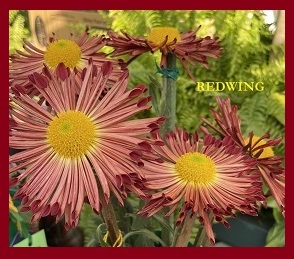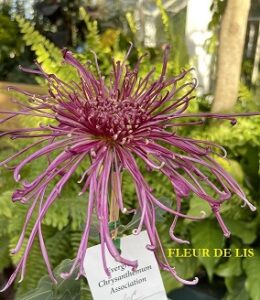EVERGREEN CHRYSANTHEMUM
Seattle, Washington
ECAMUMCLUB.ORG
Jim Anshutz, Secretary
HAPPY Final Potting Season!
MEETING OF THE ECA – THURSDAY JUNE 9, 2011 at 7 PM at the Seattle Police Athletic Association Office (SPAA) site at 11030 East Marginal Way South, Tukwila.
June is a particularly busy month in growing mums so hope you can attend the meeting and bring your questions!
YEARBOOKS
We will l bring additional 2011 ECA Yearbooks to the June Meeting for those of you who need another copy. Thanks again to Mark Ross for again taking on this big project!
UPCOMING EVENTS
Mark your calendars for the following events:
Garden Tour/Potluck – August 14
Aki Matsuri at Bellevue College – September 10 & 11th with set up on Sept. 9
Puyallup Fair – September 24th
Fall Show at Furney’s – October 29 and 30th (with set up on Oct 28)
Awards Banquet at Angelos– November 10
MEMBERSHIP IN NATIONAL CHRYSANTHEMUM SOCIETY(NSC)
At the May meeting, the ECA approved membership in the NSC. The final step in joining the NSC is to get 5 members to join the NSC. We have had more than five people mention at prior meetings their interest in joining the NSC so now we need to complete the process.
For those of you who have indicated you would like to join the NSC I’ve attached the NSC membership form. Please complete the form and bring it together with $20 to the June meeting so Chris Brookes can officially apply for membership on behalf of the ECA.
CHRYSANTHEMUM/RESOURCE LINKS
Steve Backstrom last year suggested that those of you with computer access might enjoy visiting the following sites he has now linked on the ECA web site.
The Paul Barclay’s site also has links to several English grower sites. The other links are to Harry Lawson, Kings Mums and the Elisabeth C. Miller Library. (For anyone who likes short road trips to view gardens/buy at plant sales, check out the list of June events on Elisabeth C. Miller Library site by clicking on “Plant Sales and Garden Tours and scrolling down.)
PLANT CULTURE and SUPPLIES –Cultural suggestions are attached for May and June will be discussed at the meeting. Remember to contact Mark Ross prior to the June meeting for soilless and supplies as needed.
THANKS to Mas Tamekuni for handling the Treasurer’s report at the May meeting for Chris Brookes and to Mark Ross for taking on the Secretarial duties during Jim’s vacation.
If we are mailing you the monthly notice and you have an email address, please let Jim Anshutz know your e-mail address.
TO DO LIST for May and June (revised DRS 4/25/05)
Stopping:
Most plants are stopped April 15 through June 1, including the Early English classes. Keep your stop list handy and follow it rigorously. The calendar doesn’t move backwards. For #1 and #2 varieties the English literature recommends a fairly hard pinch; that is pinching 6-8 leafs down from the growing tip. For the incurves, #3, #13, #23 pinch the smallest portion of the growing tip to get more uniform growth of the laterals. For all varieties, fertilize 1-2 weeks before pinching to produce more laterals. This is especially true for the Fairweathers.
Final Potting into 8”, 9” or 10” pots. (Or maybe in the garden soil)
Preparation
Wash pots (in mild Clorox solution) then rinse in clear water.
Prepare potting mix. – Soil fewer users; add another 5-10% of screened pumice or Perlite to improve drainage. Also at this final stage, I recommend adding Cedar Grove compost or other fresh compost and a small amount of well-composted horse manure. This results in a mix of 6 parts M&R soil less, 4 parts compost, 1 part pumice, and small amounts of horse manure and Alfalfa meal.Water plants in the 6” pots 1 day before repotting.
Potting (Pot on when the ring of roots around the bottom of the pot is semi root bound.) Cover drain holes in bottom of clay pots with a piece of broken crock to keep drain clear. Put a layer of broken sod or course pumice in the bottom of pot, then cover with 1 or 2 inches of the final (9”) mix. Place the 6” root ball on top of the 9” mix and fill around with the 9” mix. The top of the root ball should be 1+ inch below the top of the pot. Do not pack the mix except as necessary to hold the plant and stake in place. Stake with shingle or bamboo stick.
Add Marathon Systemic at this time to control black aphids. Sprinkle ½ tspn. Marathon on top of soil when repotting plant, add a thin layer of mix over the top, then water moderately.
Note: When potting on occurs after June 1, Consider dropping down one pot size pot because the roots will not have time to fill the bigger pots. # 1 & #2 cultivars, 9” max, 8” could be used. #3s, 8” max.
Feeding and pest management
After 3 weeks in final pot start summer feeding program. ` 1 1 to 2 Tsp. Peters 20-10-20 per gallon water, once a week.
Note: Some plants will thrive with the heavier solution, while others
may not like so much fertilizer. Watch the leaves to gauge the fertilizer needed. If leaves become hard and curl up you are overfeeding. If leaves are somewhat weak and lighter green then more fertilizer would help. Miracle Grow is also used quite successfully by some during this summer stage.
If plants are yellowish, first try drying them out. If drying the plant is unsuccessful, feed ½ tsp. Epsom Salts per plant. Leaf feeding of liquid iron such as Greenall or Sequesterine also helps green up the plant. Follow product directions. Do not over feed Liquid Iron.
Review your pest management program every 2 weeks,
Marathon systemic is the most effective black aphid control.
Diazinon and most rose insecticides are somewhat less effective, and require spraying every 2 weeks, as they are contact insecticides. Spray every two weeks with a fungicide. Ortho Funginex is recommended. Other fungicides will work well if used regularly. If fungus gets away and is growing fast, a fungicide used to control early blight in tomatoes will really shut it down. I use Monterey “Bravo” for such control.
4. Lateral Control
As side laterals develop after the final pinch, select the number of laterals to carry through the summer and remove all other side shoots. Generally the topmost lateral below the stem break is removed, as it is the weakest lateral structurally and easily broken off by accident. At this early stage you should carry 1-2 more lateral than you want at the bloom stage. An old saying goes: “I grow 2 for me and one for the bug.”
Surplus laterals are removed later in the summer using the following guide.
For #1 & #2 cultivars, carry 2 or 3 laterals initially, cull to 1 or 2 in Aug.
For #3 cultivars, carry 5 laterals and cull Sept. or Oct.
For #4 & b#5 cultivars, carry 4 to 5 laterals and cull to 2 to 3 in Sept.
For Earlies (13-15 and 23-25) carry 4-5 laterals and cull to 2-3 in Sept.
For Spiders, Quills, Spoons, Singles etc. follow the guide for #4 and #5.
Note: Cutting back to the few laterals seems to be a most difficult task for the novice. You must do it however if you wish to get large blooms.
5. Staking.
By now all plants will require staking. A 16-24 in stake should be placed along the main plant stem and tied to it to support and protect the plant. As the side laterals develop it will be necessary to add longer stakes that can support each lateral all the way to bud development. Care must be exercised so as to not spread the new laterals too far apart when staking, as one or more could be broken off. In other words let the laterals grow till they can be easily tied to the new stakes.




